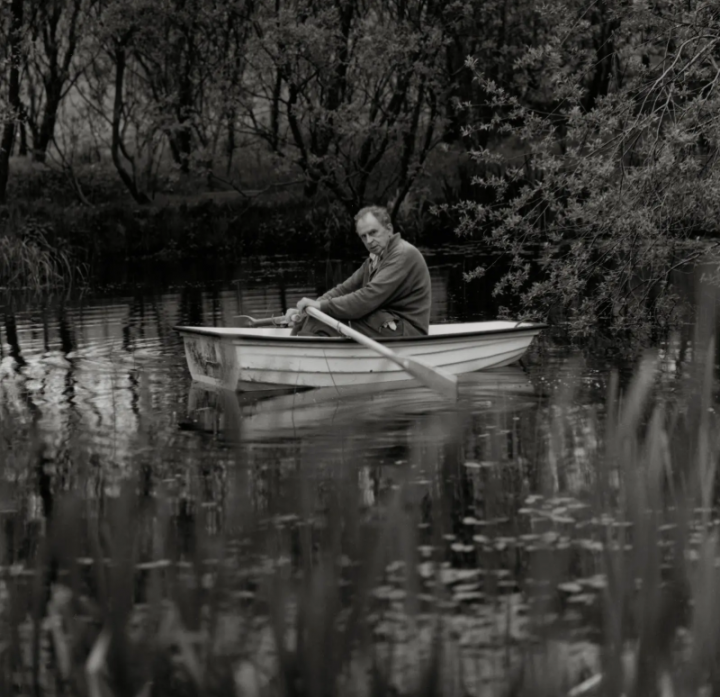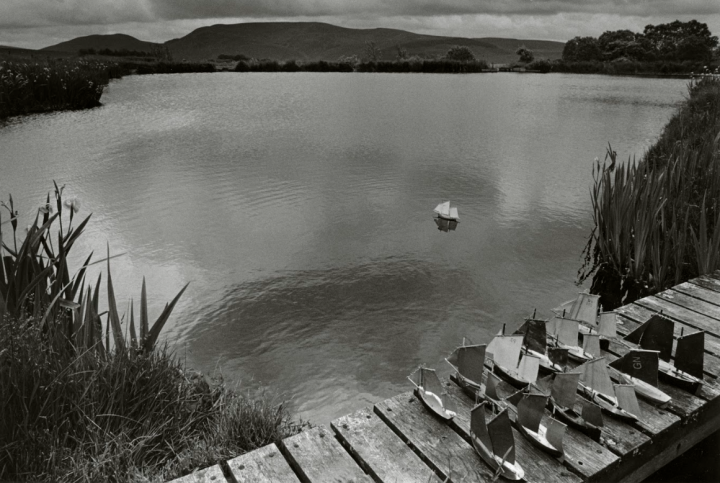Scottish Art News
Latest news
Magazine
News & Press
Publications
Gentleness and Fury in Ian Hamilton Finlay's 'Little Sparta'
11.08.2025

There are two sides to the creative genius of Ian Hamilton Finlay, and both, I think, are critical to his work. The first is a gentleness, laced with humour, which fits with my early memories of him. I see him leaning over the gate at Little Sparta, ragged jersey, gumboots, uncombed hair, greeting a visitor, and directing her to find her own way around the garden - he liked people to make their own discoveries, rather than guiding them. He points to an inscription beside a pool: ‘Please do not Feed the Boats.’
That gentleness and that humour is reflected in the pastoral side of Hamilton Finlay, his love of shade and solitude. There are tributes to be found to the traditions of the peaceful English garden, as well as the power of nature. One simple quotation from the German poet Hölderlin reads: “Calmly before his cottage in the shade/ The plowman sits; smoke rises from his modest hearth./Hospitably, the evening bells are chiming/To the wanderer in the peaceful village.”
In the woodland garden, there is a little tomb, with lines taken from St Anselm, the 11th century Archbishop of Canterbury, dedicated to a pet cat – ‘Here I rest/Here I stay.’ Close by is an inscription to a hare, which was adopted at Stonypath, rather as the 18th-century nature poet William Cowper once did, and so the dedication is to him, with a twist at the end: ‘Hic Lepusculus Noster/Requiescit/Qui Testudinem Exspectet’ – ‘Here our little hare is resting, to wait for the tortoise.’
 Robin Gillanders, from Ian's Fleet (2012). Reproduced by permission of Robin Gillanders.
Robin Gillanders, from Ian's Fleet (2012). Reproduced by permission of Robin Gillanders.
That gentleness, however, could give way to fury and contempt when he encountered institutional obduracy or the philistinism of those who did not see eye to eye with him. The campaigns he waged against the critics and the “high heid yins” of the artistic world, bristle with anger, and often produced some of his most striking work. Throughout Little Sparta and in collections across the world, are monuments, not just to the beauty of nature, to romanticism and the rural world, but to the way mankind has wrought havoc, inflicted violence and ridden roughshod over the natural world.
He would react to the smallest slight. He fell out with the arts councils, both of Britain and Scotland because they failed to note that a collection of his poetry had been wrongly described as a first edition; he reported a critic to the press council after he had dismissed Finlay as ‘a sort of Morningside version of Ossian;’ and he cancelled an arts council exhibition on the eve of a private view because The Spectator magazine had refused to accept the press council’s ruling.
His larger battles were prompted by a genuine sense of injustice. He staged his famous ‘first battle of Little Sparta’ when the then Strathclyde Regional Council charged commercial rates on his Temple of Apollo, and he defied the council’s sheriff officer in front of television cameras; he sued the French government when they cancelled an installation he had planned to mount in Paris to mark the 200th anniversary of the French Revolution; and for the critic who had described him as a fascist, he portrayed a guillotine, with her head in a basket beside it.
The frequent hypocrisy of the establishment irked him; he was saddened by man’s despoliation of nature; and beneath beauty he detected war. From these conflicts came some of his most provocative art, and they are scattered throughout Little Sparta. The names of flowers turn out to be references to warships; a cherry blossom is the word once used to describe Japanese suicide bombers; a pair of pineapples become, on closer inspection, hand grenades; the slim sculpture beside the little loch is the conning tower of a nuclear submarine; into Poussin’s idyllic painting Et in Arcadia, he introduces a Panzer tank.
.png) Robin Gillanders, from Little Sparta: Portrait of A Garden (1998). Reproduced by permission of Robin Gillanders.
Robin Gillanders, from Little Sparta: Portrait of A Garden (1998). Reproduced by permission of Robin Gillanders.
If all of this suggests an edge of bitterness to Finlay’s work, then that is to misunderstand its complexity and the lightness of touch that can be detected wherever the visitor goes in the garden that he and his wife Sue created 60 years ago. He loved children’s toys, particularly sailing boats, which he collected obsessively, and there is a delightful photograph of him in a tiny sail-boat, scudding across the Lochan Eck. He enjoyed playing on words, and there are little verbal jokes everywhere: ‘bring back the birch’ instructs a grove of trees; a stile is ‘an escalation of the footpath;’ ‘huff lane’ is where you go to recover from a bout of irritation.
So manifold are the references at Little Sparta, from classical Greece and Rome to the French Revolution and the Second World War, the works of Rousseau and the Romantics, the German poets or the English country garden, that a single visit is not enough.
Yet, even as you stand on the very edge of the garden, looking out to the bare Pentland Hills from which it was carved, you are reminded that, for all the sculpted beauty you have witnessed, nature, in the end, may reclaim its own. The quotation from the French revolutionary St Juste, etched into flat stones lying on the sward, proclaims: ‘The Present Order is the Disorder of the Future.’
Magnus Linklater is the Chairman of the Little Sparta Trust.
This article first appeared in Scottish Art News. You can read the magazine here.




